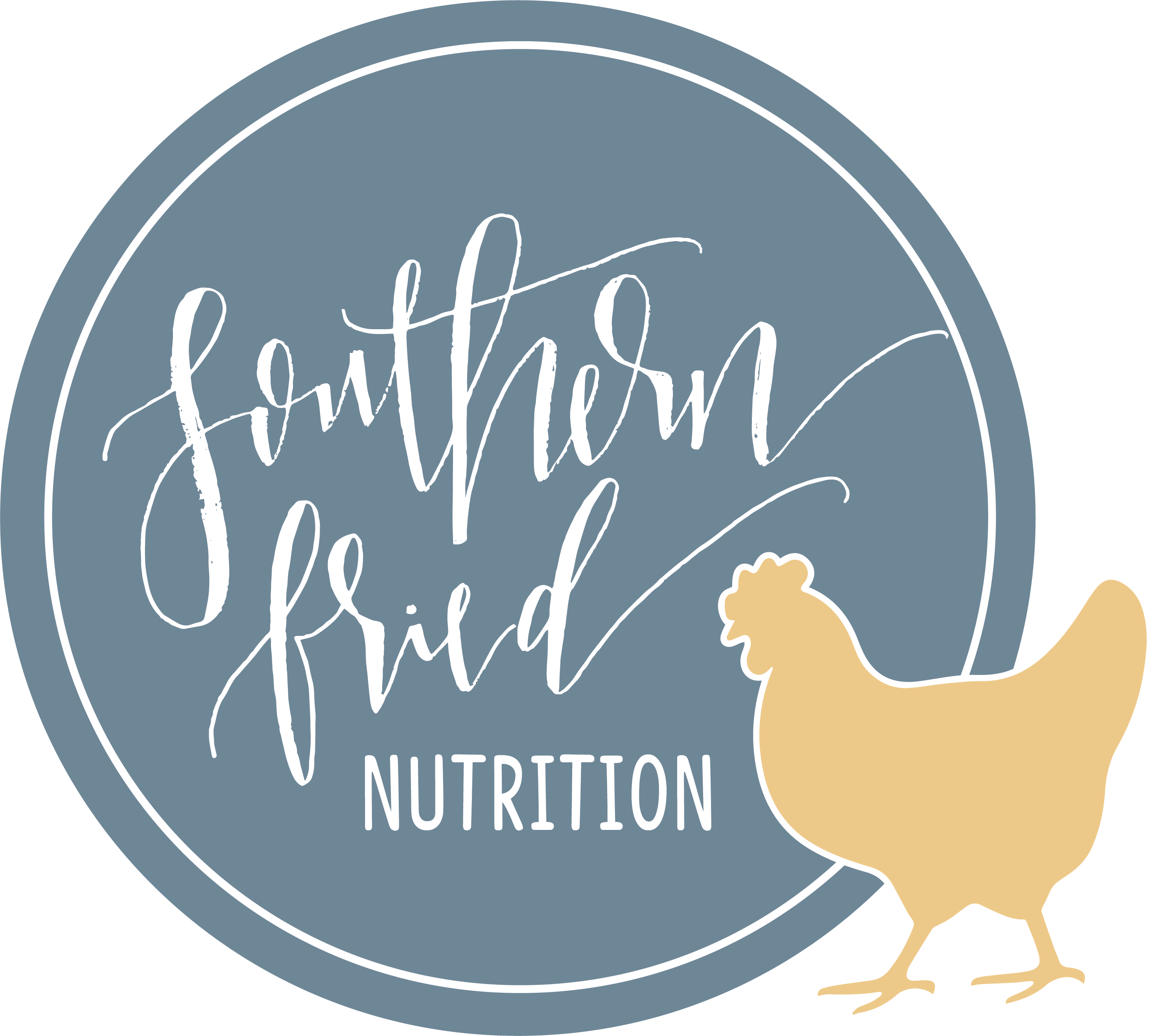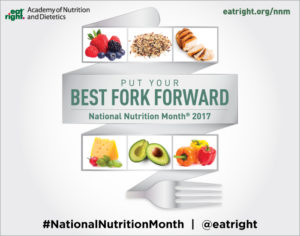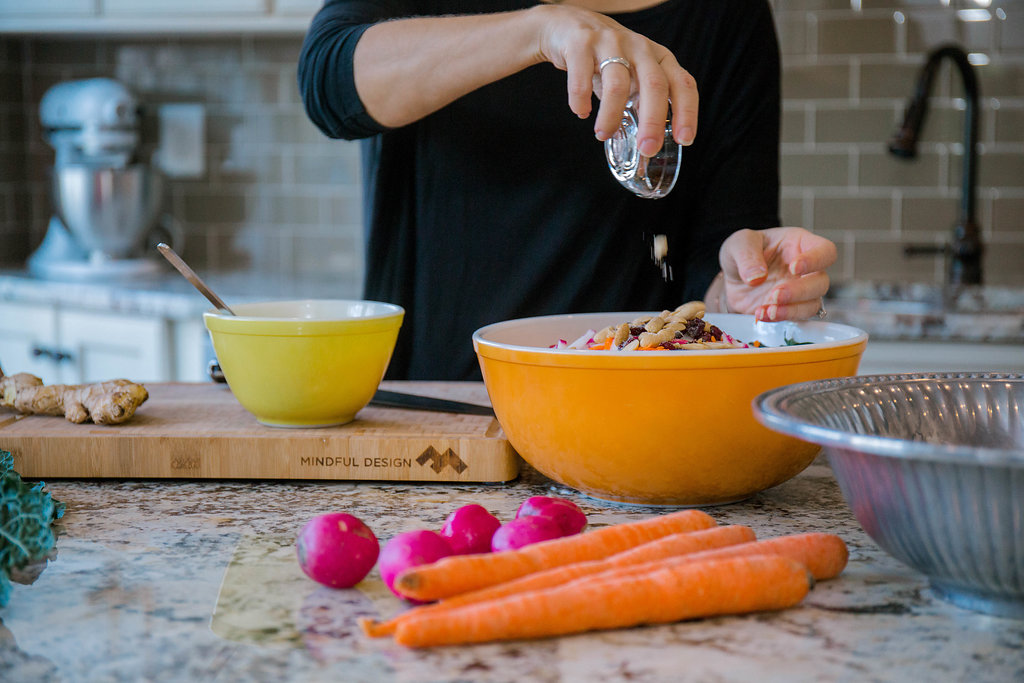“You can’t outrun your fork!” is one of my favorite sayings. While physical activity and exercise are incredibly important to being healthy and enjoying a long life, they aren’t enough if your diet is filled with things that counter all of that effort. That’s why I love this year’s National Nutrition Month theme, Put Your Best Fork Forward. The Academy has come up with five ideas to help you do just that and I’d like to share add a little how-to for you.
Idea #1: Create an eating style that includes a variety of your favorite, healthful foods. Instead of focusing so much on things you SHOULDN’T eat, take some time to think about all of the healthy foods you love to eat. Then, come up with a plan to begin to incorporate more of those into your eating plan. Love fruit? Add it it to your morning oatmeal. Fan of peanuts (which also celebrate their own month in March!)? Add them to your afternoon snack. Want to eat more green leafy vegetables? Toss a handful into your smoothie. Want to incorporate more plant proteins? Go meatless for dinner at least one night a week.
Idea #2: Practice cooking more at home and experiment with healthier ingredients. Y’all know this is one my tenants to good health! By preparing your own meals at home, you control the sodium, fat, calories, and ingredients and can be sure your meals meet your preferences AND health goals. Choose simple recipes and fresh ingredients and make cooking fun. Turn on your music, get the family involved, and make it a fun activity – instead of a chore.
Idea #3: How much we eat is as important as what we eat. Eat and drink the right amount for you, as MyPlate encourages us to do. Managing portion sizes is such an important part of getting your weight in check. Remember, you can always go back for more if you’re still hungry, so start with less than you think you want to eat. Use your hands as a guide – two cupped hands is one serving of leafy greens, a balled up fist is a serving of cooked grains or pasta, the palm of your hand is about three ounces of meat, and the end of your thumb is about a serving of fat. You don’t have to measure everything, but it may help to measure for a while until you’re comfortable with appropriate serving sizes. Make half of your plate fruits and vegetables at every meal.
Idea #4: Find activities that you enjoy and be physically active most days of the week. Exercise doesn’t have to be a chore! Here’s how I get moving – I walk to the park 2-3 days a week with my preschooler (about 1/2 mile each way). We do yoga together 1-2 times per week. We chase the dog in the yard, “hunt” bugs in the woods, and wrestle in the floor. We make movement a family affair and keep it fun for everyone. My goal is to do more weight bearing activity, but that’s my own battle. A couple of other ideas are to join a steps challenge to see how many steps you can take in a day; try a standing or walking desk; sign up for a 5k or another race/walk; get a workout buddy; try an online exercise “class” or trainer.
Idea #5: Manage your weight or lower your health risks by consulting a registered dietitian nutritionist. RDNs can provide sound, easy-to-follow personalized nutrition advice to meet your lifestyle, preferences and health-related needs. Well, of course you should work with a RDN to help you meet your goals. RDNs know how to help you develop personalized recommendations to meet your health and wellness goals. If you’re in my area, reach out through the contact me page. If not, check out the Eatright.org Find an Expert tool to locate a RDN in your area.
What do you think? Are these doable? What other suggestions do you have?


